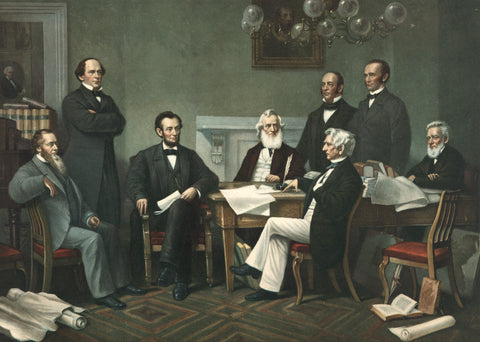
Book Review: ‘Ways and Means’ by Roger Lowenstein
While the Civil War’s human cost has been rigorously charted over the years, its financial implications have received far less attention. In his new book, Ways and Means , Roger Lowenstein remedies this oversight with an engaging, detailed account that, of necessity, focuses largely on the machinations of Salmon P. Chase, Lincoln’s first Treasury secretary.
Chase was an unlikely choice for the post; his Democratic principles—a suspicion of high finance and paper money, distrust of banks, and disdain for the tariff—were at odds with Lincoln’s Whiggish approach to the national economy. That Chase would come to embrace paper currency and a system of national banks by his resignation in 1864 was a testament to the extraordinary financial demands of the war.
The Lincoln administration inherited a national debt of $65 million from James Buchanan, equivalent to $2.3 billion today. By the end of 1861, the Union Army’s expenses were $1.5 million per day ($1.6 billion a month today). The country’s only method of taxation—the tariff—cratered as a revenue source with the imposition of the Union naval blockade.
The available financial alternatives were to tax, to borrow, or to print money, all of which Chase would eventually embrace. Working with Jay Cooke, a Philadelphia-based financier, Chase initially sought to borrow $150 million in gold from New York banks, which sought instead to lend their own paper bank notes rather than specie.
By the winter of 1861-62, the financial situation was in crisis, as war costs approached $2 million a day. Congress approved paper currency as legal tender, as well as $500 million in bonds. The issuance of legal tender signified an immediate improvement, but the slow sale of bonds led Chase to give Cooke the exclusive right to market them. By June 1863, he had sold $175 million of bonds in a 12-month period.
Simultaneously, Chase worked to create a system of national banks and implemented the nation’s first income tax. By January 1864, with the costing $2.5 million a day, Cooke had sold $515 million of bonds and earned fees worth $435,000. That same month Congress launched an investigation of Cooke’s activities, which had included a poorly disguised effort to bribe Chase with a $4,000 payment from the sale of stock he did not own.
The investigation came to nothing, and by June 1864, Chase’s relationship with Lincoln had soured. The president accepted his Treasury secretary’s thrice- proffered resignation and dragooned reluctant Maine Senator William Pitt Fessenden into accepting the post. Over the next nine months he continued the policies of his predecessor.
By 1865, the war had cost the Union $3.05 billion and the federal deficit was 30 times greater than four years earlier. The author devotes far less space to the Confederacy’s crippling financial travails, attributing them to “the lack of central coordination…and the absence of a culture fostering economic mobility.”
Salmon Chase is the protagonist of Lowenstein’s story, and he leaves the reader with a deep understanding of the war’s expenses, how they were financed, and the manner in which they reshaped and expanded the role of the federal government in American life.
Ways and Means
Lincoln and His Cabinet and the Financing of the Civil War
By Roger Lowenstein, Penguin Press, 2022
If you buy something through our site, we might earn a commission.
